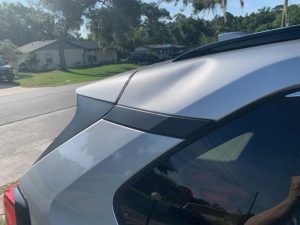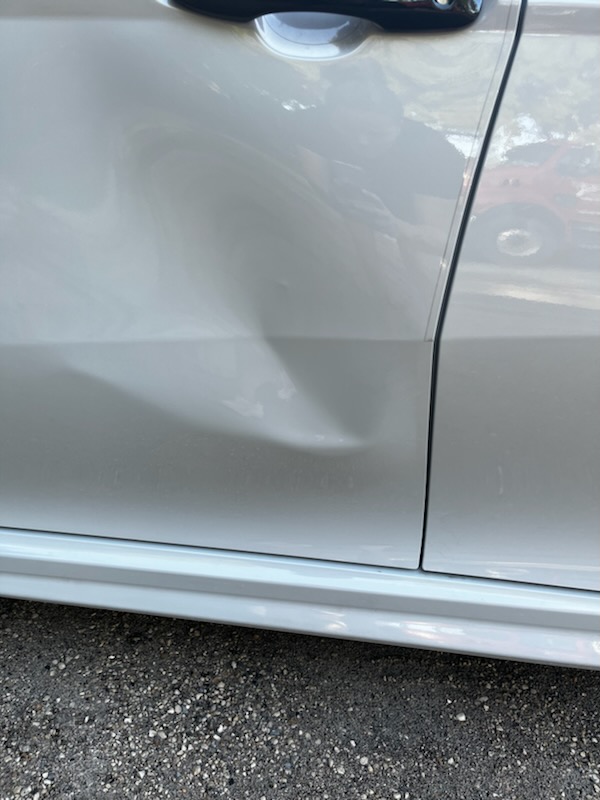PDR. Paintless Dent Repair. It sounds almost like magic, right? Waving a wand and – poof – that dent disappears. And honestly, sometimes the results are pretty impressive. But as someone who works with PDR every day, I think it’s important to be realistic about the “permanence” question. Is PDR a permanent solution? It’s rarely a simple “yes” or “no,” and that’s okay.
First off, let’s clarify: PDR, when executed properly, is incredible. We’re talking about fixing your car’s bodywork without using fillers, sanding, or repainting. This means keeping the original factory finish intact, which is a significant advantage for both the aesthetics and resale value. At Dent Max PDR, we’ve worked wonders on hail damage, door dings, and even some larger creases using PDR. While it’s not easy work, PDR a permanent solution for many car owners who want to maintain their vehicle’s value. However, it’s not exactly the best thing since sliced bread either.
The “It Depends” Factor (Because Life Isn’t Always Simple)
So, about that “permanent” thing… You’re bending metal back into place. It’s been stressed, it’s been stretched. Think of it like a paperclip – you can bend it back, but it’s never quite as strong as it was originally. PDR a permanent solution is far more sophisticated than bending a paperclip, of course, but the underlying principle is similar. We’re massaging the metal back into shape, not replacing it.
The long-term outcome of PDR depends on a few key factors:
- Dent severity: Small, shallow dents? Usually excellent candidates for PDR. Larger, more complex dents, or those with sharp creases? Those are more challenging, and the long-term results can be less predictable.
- Dent location: A dent in the middle of a flat panel is generally easier to repair than one on a body line, a curved edge, or in an area with double-layered metal (like around door frames).
- Repair quality: This is the big one. A skilled PDR technician, like the team at Dent Max PDR, understands how to massage the metal back into place gradually, using specialized tools and techniques. A rushed or poorly executed repair can actually weaken the metal.
- The type of metal. Aluminum is great. It has great memory (meaning it “remembers” its shape, so bending it back is easy). Steel, not so much.
- The condition of the paint. No cracks or chips, please.
When PDR Is (Very Likely) Permanent

In many cases, if the dent is suitable for PDR and the repair is done correctly, that dent is gone for good. Is PDR a permanent solution? you’ll likely never think about it again. We see this all the time at Dent Max PDR – customers are amazed at the results, and years later, the repair still holds up perfectly.
When to Have Realistic Expectations
- Extreme temperatures: While not common, significant temperature fluctuations could theoretically cause very slight changes in the repaired area over a long period, particularly if the metal was severely stressed.
- Future impacts: If the same area gets hit again, it will likely dent. The metal has been through a trauma, and while PDR restores the shape, it can’t make it brand new.
- Subpar repairs: This is why choosing a reputable shop is so important. A bad PDR job can make the problem worse, not better.
The Dent Max PDR Approach (Honest and Upfront)
We’re passionate about PDR, and we’re confident in our skills. But we also believe in being completely honest with our customers. We’re not going to promise miracles. We’ll assess the damage, explain the process, and give you a realistic assessment of whether PDR is the best option for your car.
If we determine that PDR is a permanent solution for your vehicle, you can be sure we’ll do it to the highest possible standard. We’re not just fixing dents; we’re building trust.
Dents bothering you? Come visit Dent Max PDR for a free evaluation. Let’s talk realistically about your options.
Frequently Asked Questions
Is PDR a permanent solution for small dents?
Yes, in most cases, PDR (Paintless Dent Repair) can be a permanent solution for small, shallow dents. When performed by a skilled technician, PDR can restore the metal to its original shape without compromising the integrity of the vehicle’s bodywork or paint. The results are often long-lasting, especially for minor dents that haven’t caused significant stress to the metal.
Can be PDR a permanent solution for large or complex dents?
While PDR is effective for many types of dents, the severity of the damage plays a crucial role in determining whether it’s a permanent solution. Larger or more complex dents, especially those with sharp creases, may not always yield permanent results. In such cases, a thorough evaluation by an experienced technician will help decide if PDR a solution.
How do I know if PDR a permanent solution for my car?
Is PDR a permanent solution? But it depends on various factors, such as the dent’s size, location, and the type of metal involved. For example, aluminum tends to hold its shape better than steel, which may affect the long-term durability of the repair. A professional PDR technician, like those at Dent Max PDR, will assess the damage and provide a realistic evaluation.
Will PDR a permanent solution even if the paint is undamaged?
Yes, if the dent is shallow and the paint remains intact without any cracks or chips, PDR a permanent solution. The process involves gently massaging the metal back into its original shape, maintaining the vehicle’s factory finish. When done correctly, it restores the dent to its original form, making the repair nearly invisible and long-lasting.
Can extreme weather affect PDR a permanent solution?
While PDR a permanent solution for many dents, extreme temperature fluctuations over time could cause minor shifts in the repaired area. However, this is quite rare. If the repair is done correctly and the dent was suitable for PDR, the results will typically hold up over the long term, even with slight temperature changes.
